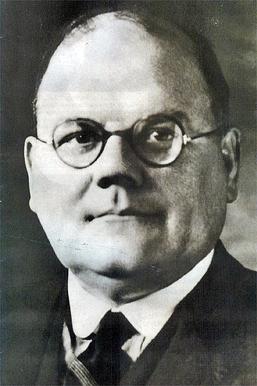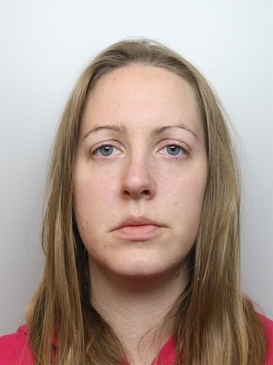Sally Clark was an English solicitor who, in November 1999, became the victim of a miscarriage of justice when she was found guilty of the murder of her two infant sons. Clark's first son died in December 1996 within a few weeks of his birth, and her second son died in similar circumstances in January 1998. A month later, Clark was arrested and tried for both deaths. The defense argued that the children had died of sudden infant death syndrome (SIDS). The prosecution case relied on flawed statistical evidence presented by paediatrician Professor Sir Roy Meadow, who testified that the chance of two children from an affluent family suffering SIDS was 1 in 73 million. He had arrived at this figure by squaring his estimate of a chance of 1 in 8500 of an individual SIDS death in similar circumstances. The Royal Statistical Society later issued a statement arguing that there was no statistical basis for Meadow's claim, and expressed concern at the "misuse of statistics in the courts".
Sir Samuel Roy Meadow is a British retired paediatrician infamous for facilitating several wrongful convictions of mothers for murdering their babies. He was awarded the Donald Paterson prize of the British Paediatric Association in 1968 for a study of the effects on parents of having a child in hospital. In 1977, he published an academic paper describing a phenomenon dubbed Munchausen Syndrome by Proxy (MSbP). In 1980 he was awarded a professorial chair in paediatrics at St James's University Hospital, Leeds, and in 1998, he was knighted for services to child health.

John Bodkin Adams was a British general practitioner, convicted fraudster, and suspected serial killer. Between 1946 and 1956, 163 of his patients died while in comas, which was deemed to be worthy of investigation. In addition, 132 out of 310 patients had left Adams money or items in their wills.
The Toronto hospital baby deaths were a series of suspicious deaths that occurred in the Cardiac Ward of the Hospital for Sick Children in Toronto, Ontario, Canada between July 1980 and March 1981. The deaths started after a cardiology ward had been divided into two new adjacent wards. The deaths ended after the police had been called in, and the digitalis-type medication that had possibly been used for the alleged killings (digoxin) had begun to be kept under lock and key. Three nurses were at the centre of the investigation and an apparent attempt to poison nurses' food. One of the nurses, Susan Nelles, was charged with four murders, but the prosecution was dismissed a year later on the grounds that she could not have been responsible for a death excluded from the indictment, which the judge deemed a murder.
Michael Iver Peterson is an American novelist who was convicted in 2003 of murdering his second wife, Kathleen Peterson, on December 9, 2001. After eight years, Peterson was granted a new trial after the judge ruled a critical prosecution witness gave misleading testimony. In 2017, Peterson submitted an Alford plea to the reduced charge of manslaughter. He was sentenced to time already served and freed.

Charles Edmund Cullen is an American serial killer. Cullen, a nurse, murdered dozens—possibly hundreds—of patients during a 16-year career spanning several New Jersey and Pennsylvania medical centers until being arrested in 2003. He confessed to committing as many as 40 murders at least 29 of which have been confirmed; though interviews with police, psychiatrists and journalists suggest he committed many more. Researchers who are intimately involved in the case believe Cullen may have murdered as many as 400 people. However, most murders cannot be confirmed due to lack of records.

Kristen Heather Gilbert is an American serial killer and former nurse who was convicted of four murders and two attempted murders of patients admitted to the Veterans Affairs Medical Center (VAMC) in Northampton, Massachusetts. She induced cardiac arrest in patients by injecting their intravenous therapy bags with lethal doses of epinephrine, commonly known as adrenaline, which is an untraceable heart stimulant. She would then respond to the coded emergency, often resuscitating the patients herself. Prosecutors said Gilbert was on duty for about half of the 350 deaths that occurred at the hospital from when she started working there in 1989, and that the odds of this merely being a coincidence was 1 in 100 million. However, her only confirmed victims were Stanley Jagodowski, Henry Hudon, Kenneth Cutting, and Edward Skwira.

R v Adams [1957] is an English case that established the principle of double effect applicable to doctors: that if a doctor "gave treatment to a seriously ill patient with the aim of relieving pain or distress, as a result of which that person's life was inadvertently shortened, the doctor was not guilty of murder" where a restoration to health is no longer possible. Such medicines are among those sometimes used in palliative care, most commonly for the most severe pain.

Benjamin Geen is a British repeat murderer and former nurse who was convicted of killing two of his own patients and committing grievous bodily harm against 15 others while working at Horton General Hospital in Banbury, Oxfordshire in 2003 and 2004.

Richard David Gill is a British-Dutch mathematician. He has held academic positions in the Netherlands. As a probability theorist and statistician, Gill has researched counting processes. He is also known for his consulting and advocacy on behalf of alleged victims of statistical misrepresentation, including the reversal of the murder conviction of a Dutch nurse who had been jailed for six years.
Edith Alice Morrell was a resident of Eastbourne, East Sussex, England, and patient of Dr John Bodkin Adams. Although Adams was acquitted in 1957 of her murder, the question of Adams' role in Morrell's death excited considerable interest at the time and continues to do so. This is partly because of negative pre-trial publicity which remains in the public record, partly because of the several dramatic incidents in the trial and partly as Adams declined to give evidence in his own defence. The trial featured in headlines around the world and was described at the time as "one of the greatest murder trials of all time" and "murder trial of the century". It was also described by the trial judge as unique because "the act of murder" had "to be proved by expert evidence." The trial also established the legal doctrine of double effect, where a doctor giving treatment with the aim of relieving pain may, as an unintentional result, shorten life.

Colin Campbell Norris is a Scottish serial killer and former nurse convicted for the murder of four elderly patients and attempted to murder another in two hospitals in Leeds, England in 2002.
Jessie Gordon, formerly McTavish, is a Scottish retired nurse who was convicted in 1974 of murdering a patient with insulin, and of administering a variety of substances with intent to cause harm. The conviction was overturned on appeal in 1976. She was dubbed the "Angel of Death" by the press.
Kevin Sweeney is a British businessman convicted in 2001 in the Netherlands for the murder of his wife, Suzanne Davies, by arson on 17 July 1995. The prosecution offered no motive for the alleged crime and Suzanne's life insurance policies were in trust for the children.

The Deventer murder case is a murder case which took place in the Dutch city of Deventer in 1999. It has become a cause célèbre because the murder has officially been solved, but not everybody agrees with the final judgment of the court. The case has been re-opened twice. The first time this was done because the evidence previously used for the conviction had proven to be incorrect, while the second time there were strong clues that another suspect's testimony about his whereabouts during the time of the murder did not match real facts. Nevertheless, the same suspect—former tax advisor Ernest Louwes—has been convicted twice. His second conviction took place on the basis of different evidence from that used during the first trial. However, some people such as the opinion pollster Maurice de Hond are still convinced of Louwes' innocence.

In 2011, deaths occurred at Stepping Hill Hospital in Stockport, Greater Manchester, England. After suspicions were raised concerning the similarities of the deaths, a murder inquiry was launched. Nurse Victorino Chua was found to have poisoned several patients with insulin. He was convicted of murder in 2015 and sentenced to life imprisonment.

The Bahrain health worker trials were a series of legal cases in which forty-eight doctors, nurses, and dentists faced charges for their actions during the Bahraini uprising of 2011. In September 2011, twenty of the health workers were convicted by a military court of felonies including "stockpiling weapons" and "plotting to overthrow the government". The remaining twenty-eight were charged with misdemeanors and tried separately. The following month, the felony sentences were overturned, and it was announced that the defendants would be retried by a civilian court. Retrials began in March 2012, but were postponed until June 14. Convictions against nine of the defendants were quashed and reduced against another nine. The Court of Cassation upheld the sentences against the remaining nine on 1 October.
Niels Högel is a German serial killer and former nurse who was sentenced to life imprisonment, initially for the murders of six patients, and later convicted of a total of eighty-five murders. Estimates of Högel's alleged victim count have increased since his first conviction; as of 2020, he was believed to have claimed 300 victims over fifteen years, making him the most prolific serial killer in the history of peacetime Germany, and possibly the world.

Lucy Letby is a British former neonatal nurse who murdered seven infants and attempted the murder of six others between June 2015 and June 2016. Letby attracted suspicion following a high number of infant deaths which occurred at the neonatal unit of the Countess of Chester Hospital shortly after she began working with children in the hospital's intensive care unit.
Amy Loughren is an American reiki master and former registered nurse who is known for assisting in the arrest and prosecution of serial murderer Charlie Cullen.











